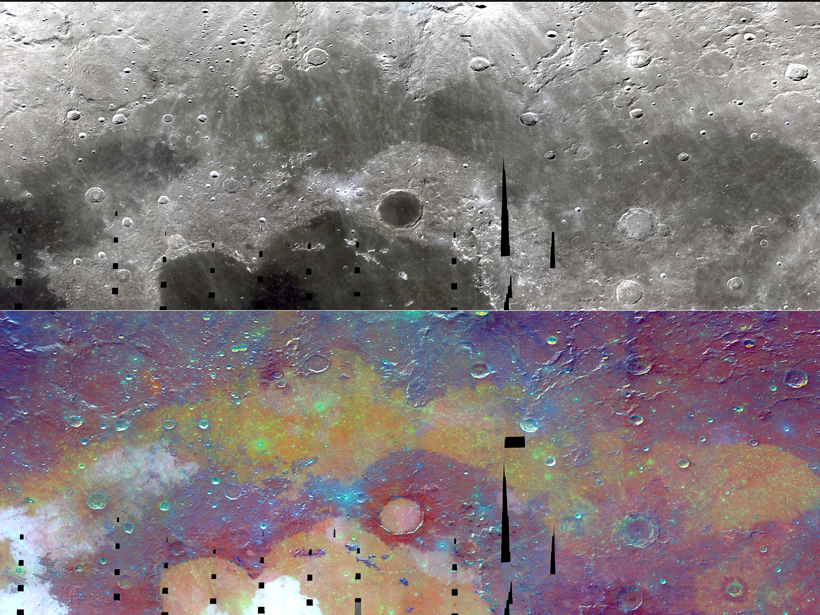Source: Journal of Geophysical Research: Planets
Analyses of lunar samples support the idea that a magma ocean once covered the primordial Moon. As this lunar magma ocean solidified, it chemically separated to form a crust rich with the mineral plagioclase, as well as a denser mantle that was richer in iron and magnesium. Later, partial melting of the mantle produced large outpourings of basaltic magma, which flooded low-lying impact basins to create the Moon’s dark maria.
Although most of these outpourings occurred between 3.8 and 3.0 billion years ago, some mare basalt samples collected during the Apollo 14 and Luna 16 missions are even older, recording a separate episode of volcanism that ended prior to the Imbrium impact. These samples, which also have anomalously high concentrations of aluminum (12–18 weight percent aluminum oxide) compared to other mare basalts (7–12 weight percent), may represent a more primitive mantle, before complete separation of the plagioclase-rich crust.
Until recently, the small number of aluminum-rich basalts in the lunar sample collection has hindered additional study of this important group of rocks. Now, using orbital remote sensing data from the Clementine, Lunar Prospector, and Lunar Reconnaissance Orbiter missions, Kramer et al. have mapped the largest area of aluminum-rich basalts on the lunar surface. These rocks, which appear to have a composition similar to the oldest basalt samples, are located in Mare Frigoris, a northern hemisphere mare with an unusually elongated shape (Mare Frigoris stretches an average of 7.5° along latitude versus 100° along longitude) and a puzzling lack of evidence for an impact origin for the depression into which the basalts flooded.
Intriguingly, Mare Frigoris’s northern boundary, as mapped by the team, coincides with the northern extent of a major magma conduit associated with the Moon’s largest mare, the Ocean of Storms. The authors argue that the conduit’s association with the Moon’s largest cache of aluminum-rich basalts makes Frigoris an ideal location for future study—and perhaps sampling—to shed light upon the composition and evolution of the Moon’s mantle. (Journal of Geophysical Research: Planets, doi:10.1002/2014JE004753, 2015)
—Terri Cook, Freelance Writer
Citation: Cook, T. (2016), Satellites reveal the history of the Moon’s “frigid sea,” Eos, 97, doi:10.1029/2016EO044013. Published on 25 January 2016.
Text © 2016. The authors. CC BY-NC 3.0
Except where otherwise noted, images are subject to copyright. Any reuse without express permission from the copyright owner is prohibited.

